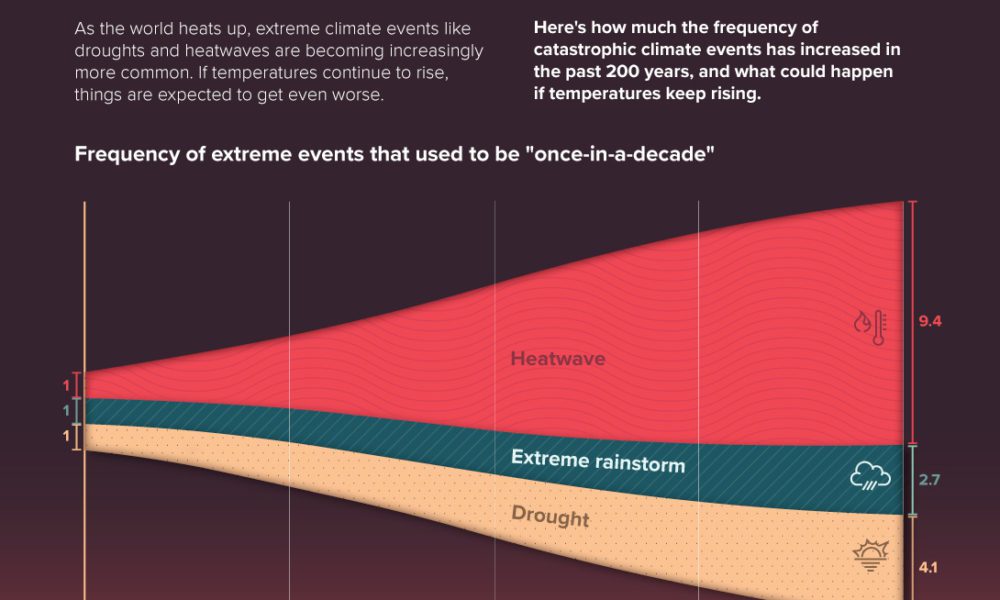Never worked China. The M55 is a specific Miocene formation in the Gulf of Mexico. All of the Miocene formations are numbered.So you were unaware of the M55 subformation in China? And you've worked all over the world?
I was excoriated because I didn't know westies formation name. So I assume that if you didn't know about the M55 subformation in China you are also a faker.
Hmmmm.....
Navigation
Install the app
How to install the app on iOS
Follow along with the video below to see how to install our site as a web app on your home screen.
Note: This feature may not be available in some browsers.
More options
Style variation
You are using an out of date browser. It may not display this or other websites correctly.
You should upgrade or use an alternative browser.
You should upgrade or use an alternative browser.
MIT Scientist Debunks Global Warming Hysteria
- Thread starter Deplorable Yankee
- Start date
Sunsettommy
Diamond Member
- Mar 19, 2018
- 15,320
- 12,900
- 2,400
Diapir is a proper geologic term, dumbass.
Google it if you don't believe me.
Sheesh you know NOTHING about geology.
Yes, it is a geologic term but Salt Domes and Diapir isn't the same thing you are confused here lady.
You wouldn't. But if you were searching seismic images looking for a match and that was how it was labelled that's what you'd call it. Because you wouldn't know any better....and one quick question: if I wasn't an actual geologist why in god's name would I google "diapir"????
Your logic is beyond weird.
Sunsettommy
Diamond Member
- Mar 19, 2018
- 15,320
- 12,900
- 2,400
Not me. I was taught both dome and diapir. I like diapir better.
Salt dome is more accurate since Diapirs can be caused by different materials not just Salt.
Wikipedia
"Rock types such as evaporitic salt deposits, and gas charged muds are potential sources of diapirs. Diapirs also form in the earth's mantle when a sufficient mass of hot, less dense magma assembles. Diapirism in the mantle is thought to be associated with the development of large igneous provinces and some mantle plumes."
You are getting schooled by a non-geologist which shouldn't be happening.

Does it have any implication to the earth's climate? Because I am discussing how the geologic record relates to the earth's climate.So tell me what the difference is between a Type I and Type III organic? How do they differ in terms of diagenesis and catagenesis?
Cardinal Carminative
VIP Member
- Apr 2, 2022
- 4,397
- 1,001
- 73
Yes, it is a geologic term but Salt Domes and Diapir isn't the same thing you are confused here lady.
A salt dome is a type of diapir.
Cardinal Carminative
VIP Member
- Apr 2, 2022
- 4,397
- 1,001
- 73
That's very interesting because estimating thermal maturity in basins sounds an awful lot like what they do to apprise source rocks for unconventional plays like shale oil and shale gas.
So if you weren't doing it for the purpose of oil and gas exploration, why were you doing it?
Basinal brine migration related to MVT deposits (galena-sphalerite)
Sunsettommy
Diamond Member
- Mar 19, 2018
- 15,320
- 12,900
- 2,400
A salt dome is a type of diapir.
I know that but you still missed my point since Salt is just one of the possible material involved in a Diapir
I think I would rather ask you what criteria geologists look for when appraising exploration plays.Your forgot to ask me to circle the regions where the oil would likely accumulate in the reservoirs.
You know like thermal maturity that you are supposedly an expert on but don't work in petroleum. Which is weird because I don't know of any other reason to be looking at thermal maturity if not for petroleum.
Cardinal Carminative
VIP Member
- Apr 2, 2022
- 4,397
- 1,001
- 73
I know that but you still missed my point since Salt is just one of the possible material involved in a Diapir
No one cares what your point was.
Mississippi Valley Type deposits?Basinal brine migration in the mid continent. Related to MVT deposits (galena-sphalerite)
Galena-sphalerite... for what commercial purpose?
And what does that have to do with thermal maturity of a shale?
Cardinal Carminative
VIP Member
- Apr 2, 2022
- 4,397
- 1,001
- 73
I think I would rather ask you what criteria geologists look for when appraising exploration plays.
You know like thermal maturity that you are supposedly an expert on but don't work in petroleum. Which is weird because I don't know of any other reason to be looking at thermal maturity if not for petroleum.
See? That's your limitation. You can estimate thermal maturation for a variety of aspects. I was tracking hot basinal brine migration by measuring thermal maturity of dispersed organics.
It's very much in line with petroleum source rock evaluation. A lot of similarities. Instead of just Type I organics I was looking at Type III.
Cardinal Carminative
VIP Member
- Apr 2, 2022
- 4,397
- 1,001
- 73
Mississippi Valley Type deposits?
Galena-sphalerite... for what commercial purpose?
What do you think Galena and Sphalerite are mined for? What do you think they mine MVT deposits for and have historically?
I thought you knew all manner of geologists? Don't you remember any mineralogy???
Pb and Zn. (Google those so you know what elements they are).
Sunsettommy
Diamond Member
- Mar 19, 2018
- 15,320
- 12,900
- 2,400
LOL,No one cares what your point was.
That is because I caught your error thus you have to make another cover up reply no one is fooled by your evasive bullshit.

"The term diapir may be applied to igneous structures, but it is more commonly applied to non-igneous, relatively cold materials, such as salt domes and mud diapirs."
"Rock types such as evaporitic salt deposits, and gas charged muds are potential sources of diapirs. Diapirs also form in the earth's mantle when a sufficient mass of hot, less dense magma assembles. Diapirism in the mantle is thought to be associated with the development of large igneous provinces and some mantle plumes."
When other rational people come back, they are going to see this how you messed up a simple geologic understanding.
Last edited:
Why?See? That's your limitation. You can estimate thermal maturation for a variety of aspects. I was tracking hot basinal brine migration by measuring thermal maturity of dispersed organics.
It's very much in line with petroleum source rock evaluation. A lot of similarities. Instead of just Type I organics I was looking at Type III.
I never made any such claim.What do you think Galena and Sphalerite are mined for? What do you think they mine MVT deposits for and have historically?
I thought you knew all manner of geologists? Don't you remember any mineralogy???
Pb and Zn. (Google those so you know what elements they are).
And you still haven't told me what the commercial reason was or how thermal maturity applies to that.
jc456
Diamond Member
- Dec 18, 2013
- 150,344
- 34,500
- 2,180
Are you suggesting climate hasn’t always changed?AGW has not been going on for thousands of years.
Irrelevant. AGW doesn't say cold weather will disappear in the immediate future.
Generalized to the point of meaninglessness. Global warming is increasing the frequency and severity of severe weather events.
He includes himself here and expects to be trusted. He has not explained why we shouldn't trust anyone else.
It would be more accurate to describe Mr Lindzen as an employee of the ExxonMobil corporation and more generally by the fossil fuel industry.
*******************
*******************
Background
Richard S. Lindzen is former Alfred P. Sloan Professor of Meteorology at the Massachusetts Institute of Technology (MIT), a position he held from 1983 until his retirement in 2013. [3], [76], [77]
Lindzen’s academic interests lie within the topics of “climate, planetary waves, monsoon meteorology, planetary atmospheres, and hydrodynamic instability,” according to his faculty profile at MIT. [3]
Lindzen is a former distinguished senior fellow at the Cato Institute‘s Center for the Study of Science. The Center shut down in 2019, and was no longer affiliated with Lindzen at that time. “It’s unclear when he left Cato, and [Spokeswoman Khristine] Brookes declined to comment on personnel issues,” E&E News reported. [2], [101]
The Cato Institute, a conservative think tank where Lindzen has also published numerous articles and studies, has received at least $125,000 from ExxonMobil since 1998. In his 1995 article, “The Heat Is On,” Ross Gelbspan reported Lindzen charged oil and coal organizations $2,500 per day for his consulting services. [4], [5]
Lindzen has described ExxonMobil as “the only principled oil and gas company I know in the U.S.” [6]
In addition to his position at Cato, Lindzen is listed as an “Expert” with the Heartland Institute, a member of the “Academic Advisory Council” of the Global Warming Policy Foundation (GWPF), and an advisor to the CO2 Coalition, a group promoting the benefits of atmospheric carbon dioxide. [58], [59], [62]
Fossil Fuel Funding
As part of a March 2018 legal case between the cities of San Francisco and Oakland and fossil fuel companies, Lindzen was asked by the judge to disclose any connections he had to connected parties. [94]
In response, Lindzen reported that he had received $25,000 per year for his position at the Cato Institute since 2013. He also disclosed $1,500 from the Texas Public Policy Foundation for a “climate science lecture” in 2017, and approximately $30,000 from Peabody Coal in connection to testimony Lindzen gave at a proceeding of the Minnesota Public Utilities Commissions in September 2015. [98]

Richard Lindzen
Richard Lindzen Credentials Background Richard S. Lindzen is former Alfred P. Sloan Professor of Meteorology at the Massachusetts Institute of Technology (MIT), a position he held from 1983 until his retirement in 2013.3“Faculty News,” EAPS, May 31, 2013. […]www.desmog.com
Cardinal Carminative
VIP Member
- Apr 2, 2022
- 4,397
- 1,001
- 73
I never made any such claim.
And you still haven't told me what the commercial reason was or how thermal maturity applies to that.
It was a chance to trace the basinal brines that lead to the emplacement of the deposits. As simple as that. That's the kind of stuff one does for graduate work.
The brines came in and deposited the Pb and Zn mineralization. The goal was to establish the origin of the deposits and try to figure out which of several basins were related to the particular deposit I was looking at.
The idea was that overlying some of these deposits the kerogen that was dispersed in the shales may show signs of successive pulses of hot basinal brines. This should show up in paths of higher thermal maturity. In my case I was mostly looking at the various indicators of thermal maturity (increased C=C bonds in the IR or loss of C-H functional groups). There are other means as well that have been utilized, like illite crystallinity.
The goal is to determine what mechanisms were in place to account for the Pb Zn mineralization. One of the coolest papers I found was looking at the changes in galena crystallography as different fluids pulsed in with different chemical features causing a change in added layers of galena on galena crystals in these formations.
My work was just a neat application of organic geochem. Later on I worked extensively with coal and tracked thermal maturation using IR but also looking at things like vitrinite reflectance (a pretty standard technique) for applications using coal, not for coal exploration. That was what pushed me ultimately over into straight-up chemistry. I was spending most of my time making materials from coal and chemically treating it to see how it altered it. The same sort of stuff can be done when looking at intrusions near coal beds (or presumably any dispersed organic). In the case of intrusions near a coal bed there's thermal markers in the coal that occur both optically (vitrinite reflectance) and chemically.
Last edited:
Cardinal Carminative
VIP Member
- Apr 2, 2022
- 4,397
- 1,001
- 73
LOL,
That is because I caught your error
There's no error. A salt diapir is another name for a salt dome.
"The term diapir may be applied to igneous structures, but it is more commonly applied to non-igneous, relatively cold materials, such as salt domes and mud diapirs."
See? "Salt dome".
When other rational people come back, they are going to see this how you messed up a simple geologic understanding.
I used the correct term, troll. Now go away.
jc456
Diamond Member
- Dec 18, 2013
- 150,344
- 34,500
- 2,180
It’s like Groundhog Day with you!
The Accelerating Frequency of Extreme Weather
Extreme weather events, like droughts and heatwaves, have become more common over the years. But things are expected to get worse.www.visualcapitalist.com

Mapped: How climate change affects extreme weather around the world - Carbon Brief
Attribution studies calculate whether, and by how much, climate change affected the intensity, frequency or impact of extremes – Carbon Brief has mapped every published study on how climate change has influenced extreme weather.www.carbonbrief.org
National Climate Assessment
The National Climate Assessment summarizes the impacts of climate change on the United States, now and in the future.nca2014.globalchange.gov

Extreme Weather and Climate Change
www.c2es.org

7 c Increased extreme weather events due to climate change
c. Incidents of extreme weather are projected to increase as a result of climate change. Many locations will see a substantial increase in the number of heat waves they experience per year and a likely decrease in episodes of severe cold. Precipitation events are expected to become less frequent...www.climate.gov

Extreme weather gets a boost from climate change
Scientists are detecting a stronger link between global warming and changing weather patterns. Read more about it here.www.edf.org
Similar threads
- Replies
- 100
- Views
- 905
- Replies
- 2
- Views
- 123
New Topics
-
-
-
Could Trump achieve Reagans Holy Grail and defeat communism yet again?
- Started by shockedcanadian
- Replies: 7
-
Idaho potato acreage expected to drop by 15,000 acres in 2025
- Started by tyroneweaver
- Replies: 2
-
I apparently matched with a woman who has OATMEAL for Brains from dating app
- Started by fbj
- Replies: 7